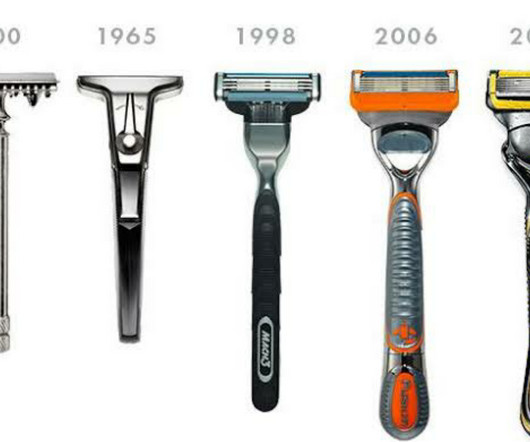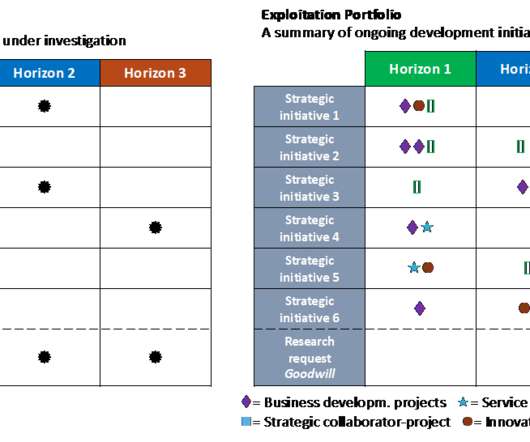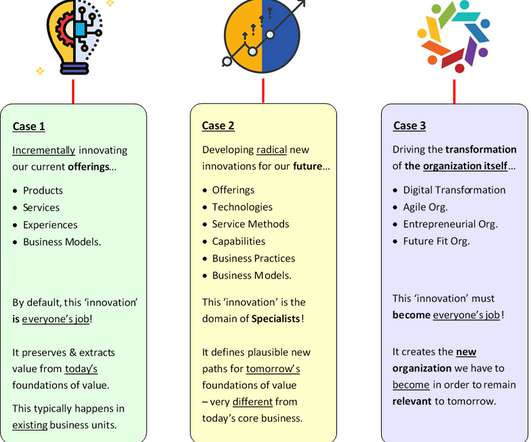Has innovation changed over the last ten years?
Paul Hobcraft
SEPTEMBER 25, 2023
From incremental to radical : Innovation used to be seen as an incremental process where organizations improved their existing products, services, or processes by making small changes. Disruptive innovation is the creation of a new value proposition that displaces existing ones 2. References 1. oecd.org 2.












































Let's personalize your content